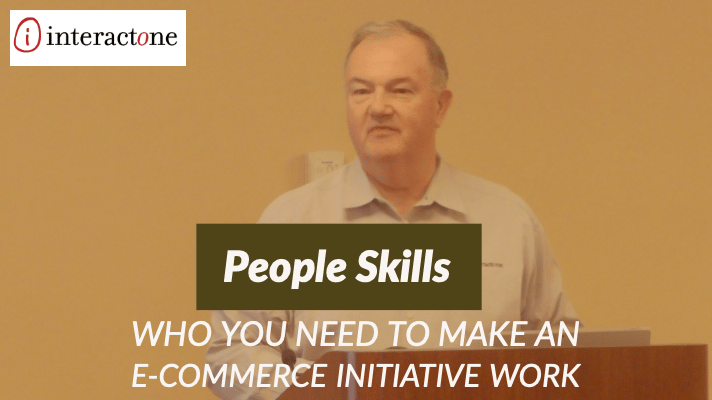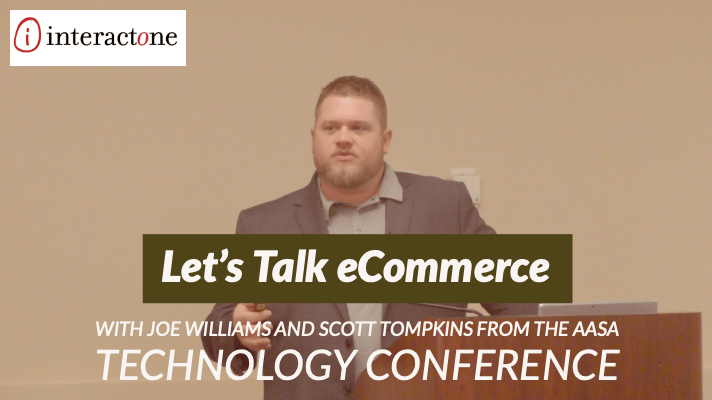
Top Digital Marketing Trends for 2020

The marketing world is in constant motion, always evolving and ever innovating. And as the calendar turns to a new year we here at InteractOne have taken a look into the future to see what innovations and trends will shape the digital marketing world in 2020.
Personalization
As online customers continue to be inundated with generic ads, AI-powered personalization will become more important. Customers decide very quickly—in a matter of seconds—whether they like your marketing message. Provide something relevant and you’ve got a curious website visitor and perhaps a long-term customer. Miss the mark, however, and they’re gone. Customers still want to feel like they relate to your company and AI-powered personalization can go a long way towards accomplishing that. Sending out generic blasts to your contact list isn’t going to cut it in 2020. AI-powered personalization can help you to segment your contacts and website visitors into specific groups based on data, interactions, and behaviors. This allows your marketing team to customize an omni-channel campaign that has a cohesive message. A message that has determined by your customer’s needs based on their interactions with your site and tailored to their location on their sales journey.
Content
Content marketing will still be king of the castle in 2020. It isn’t going anywhere, but perhaps some of its long-standing practices are. Quality over quantity and diversification will be what drives traffic in the new year. Even though video content is the belle of the ball, it’s not the be-all-end-all. When planning out your content calendar, don’t just put all of your eggs into the ‘video’ basket. People still read blogs, people still download white papers, people still engage in interactive content like quizzes or image filters (when brand-appropriate). Blogs and other long-form written content will still continue to be vital to your SEO. But don’t create content simply for the sake of creating content. You must ensure that it’s of quality, on-brand and speaks to your target audience. If your blog or video doesn’t help solve a problem or answer a question that your target audience has, then what good is it to your brand? Develop a content calendar and stick with it, you won’t see improvements in SEO, lead gen and traffic overnight, but steadily these numbers will increase with your commitment to a diverse quality content calendar.
Voice
It’s estimated that by the end of 2020 45%-50% of all search will be Voice Search. As of today, according to Google, 20% of all Google search queries now take place via voice search, with 71% of all mobile users between 18 and 29 utilized the voice assistants on their smartphones. Brands are already beginning to incorporate more voice technology into their digital offerings. Magento recently announced a new integration will allow Magento merchants to offer their customers a more personalized and streamlined experience the moment they start their Amazon/Alexa shopping journey, including re-orders, wish lists and delivery notifications. InteractOne was also selected by Amazon to be a partner on beta testing for this innovative integration. You can read more about that here.
Consumer Privacy
While there is a large segment of the population that is more than okay with their voice-activated assistants listening in on their every word, awaiting commands, there is a growing percentage of the population that don’t want their activity monitored in any way. Especially their clicks and searches. The use of Virtual Private Networks (VPNs) is on the rise, increasing more than 185% in North America since the beginning of 2018. Through a VPN a user can scroll through websites fairly anonymously. The VPN changes the user’s IP address to a different, often randomized location. Meaning that your carefully built cookies, ad trackers and remarketing campaigns aren’t able to continue to connect with VPN users who visit your site. With the continued decline in public trust in entities such as Facebook and Google thanks to their repeated privacy-related faux-pas, look for individuals to take privacy matters into their own hands in 2020 and beyond. Since there will be a growing number of visitors to your site who are surfing anonymously through a VPN or a web browser that blocks ads and trackers (like Brave) you won’t be able to rely on the fact that your remarketing campaigns will continue to follow the user around the web. It is up to marketers and content creators to create powerful, memorable content that will connect with users when they interact with your brand. This connects back to the importance of having great and meaningful content. The only chance you have to capture the contact information of these visitors is through your content, making your content strategy even more important.
Testing
A/B Testing is quite simply the most effective and efficient way to improving your website and to create an improved shopping experience. While you have invested heavily in the UX/UI design of your website the only real way to know what works and what doesn’t is to test it with the general public. Thanks to the fact that there are a number of great Magento extensions specifically designed for A/B testing (HiConversion, Optimizely, Apptemize & AB Tasty) it’s easier than ever to test everything on your site from prices, to CTAs, to page design and color scheme. To learn more about A/B Testing check out our recent blog.
Marketing continues to evolve at warp speed. It’s imperative to adapt and evolve with new marketing trends to stay competitive and retain high-quality customers. Setting an intention to learn and integrate new innovations will help set your company apart from the rest of the herd. To get started implementing these cutting-edge technologies into your eCommerce site and marketing plan contact us today!



















